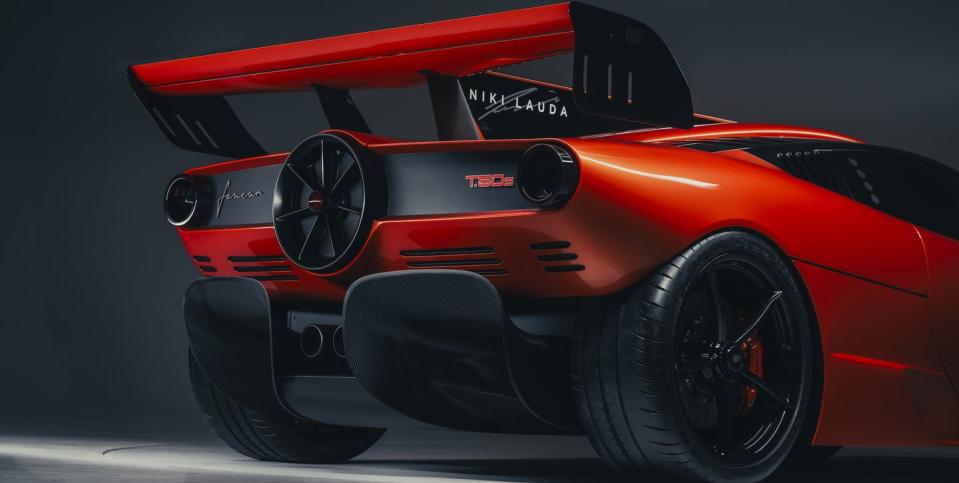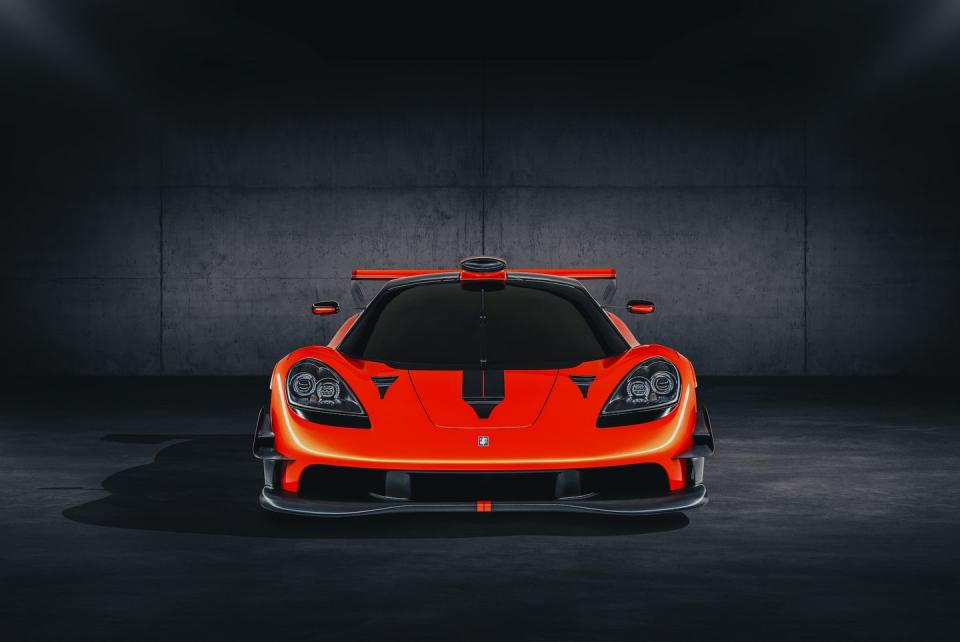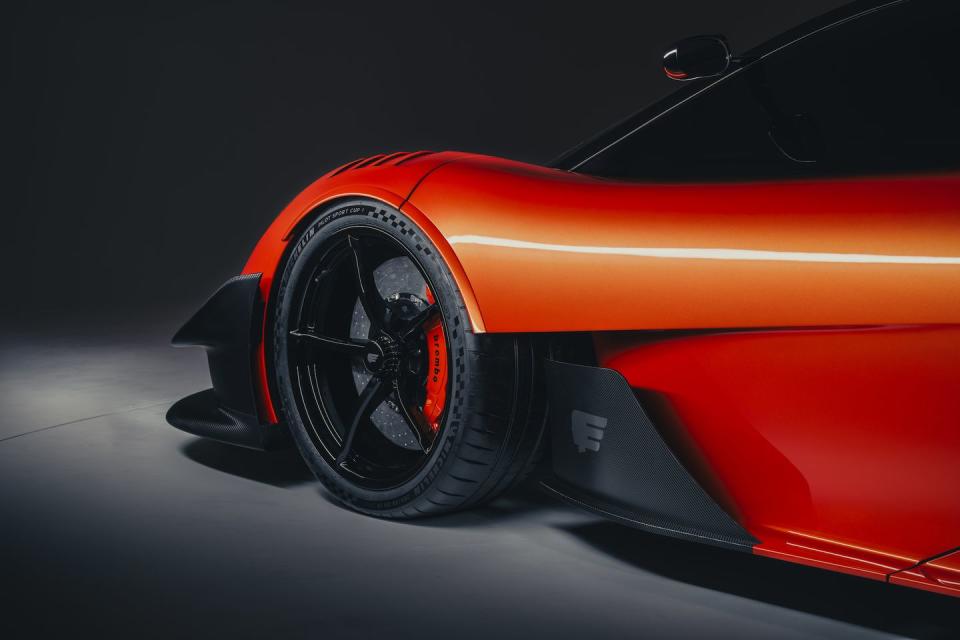How the GMA T.50S Niki Lauda Makes 3300 Pounds of Downforce

Gordon Murray is on a roll. The legendary designer of Formula 1 cars—and father of the McLaren F1—unveiled the GMA T.50 last summer, a road-going supercar that picks up where the F1 left off, with a naturally-aspirated V-12, a manual transmission, and a central driving position. There's plenty to love about the T.50, including the fact that it's more than 300 lbs lighter than a McLaren F1 while packing 654 hp. Not to mention, it's got a huge electric fan in the rear bodywork to generate ridiculous downforce at speed.
All that didn't stop Murray from taking things even further with the T.50S Niki Lauda. This track-only variant weighs less than 1900 pounds, makes 725 hp, and most impressively, generates more than 3300 pounds of downforce at speed. We spoke with Murray to find out just how he achieved that level of downforce in his latest creation.

Freed from the constraints of a road-going machine, Murray built so much downforce capability into the T.50S, he actually had to dial it back. The team at GMA found that the Lauda's many aero features could generate a maximum of 4189 pounds of downforce at speed, which they adjusted down to "only" 3307 lbs to make the T.50S more manageable for customers.
On a video call with Road & Track, Murray explained where all that downforce comes from. At the front, the T.50S features a huge splitter with a central airfoil element (denoted by the orange stripe) that generates downforce. Diffusers behind the front wheels add more downward pressure.
"On purpose, the car is very adjustable," Murray said. "So for example, if the driver's local circuits are quite bumpy, we can set the chassis up for that. If they need a particular low-speed or high-speed balance, the car is fully adjustable on the aero and chassis."

The dual-level dive planes ahead of each front wheel contribute downforce and clean up airflow down the sides of the car. Fender vents over the front wheels, like you see on sports car prototype racers, relieve air pressure in the wheel wells. Three NACA ducts pierce the nose of the Lauda: The outer two are used for brake cooling, while the central vent feeds fresh air into the cabin through outlets on either side of the gauge cluster. Barge boards behind the front wheels help direct air to the cooling ducts ahead of the rear wheels for engine oil and gearbox radiators. Those cooling components had to be moved from their higher positions on the road car to make room for the huge LMP1-style stability fin running down the spine of the T.50S, coming off the roof-mounted ram-air engine intake.

 Yahoo Autos
Yahoo Autos 